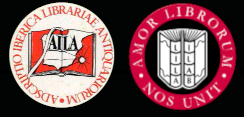


Home |
Temáticas |
Catálogos |
Pedidos |
  |  |
|||||||
|

|
RUGENDAS. (Johann Moritz) HABITANTE DE GOYAS, QUADRO A ÓLEO PINTADO SOBRE MADEIRA. |
|
|
Clique nas imagens para aumentar. AVELLAR. (Andre do) CHRONOGRAPHIA OV REPORTORIO DOS TEMPOS:O mais Copioso que te agora sayo a Lvz. Quarta impressam. Lisboa, Iorge Rodriguez, 1602. In 8.º de 19x14 cm. Com [viii], 373 fólios. Encadernação da época em pergaminho flexivel. Ilustrado com numerosas xilogravuras no texto, a primeira, na folha de rosto, é um globo que representa a Europa, a África, a Ásia e parte do continente Americano, aparecendo repetida no fólio H5. Exemplar com anotações coevas marginais, falta de 4 (de 8) fólios iniciais não numerados, contendo parte do índice. Apresenta também leves picos de oxidação própria do papel. Trata-se provavelmente da quinta e última edição desta obra que aborda principalmente a meteorologia, a astrologia e a geografia. Todas as edições são de grande raridade. Originalmente era uma tradução livre da obra de Jerónimo Chaves, Cronografia ou Reportório dos Tempos, escrita em castelhano. As edições portuguesas, mais tardias (Lisboa 1585, Coimbra 1590 e 1593 e Lisboa 1594) foram significativamente alteradas, dando especial atenção à América (Brasil, bem como às possessões espanholas), África, Ásia e regiões polares. As xilogravuras incluem um globo que representa o Brasil e o continente Sul Americano, um corte transversal da Terra, cada um dos 12 signos do zodíaco, o sol, a lua e os cinco planetas conhecidos. Um capítulo sobre medicina e astrologia contém três cortes anatómicos (um deles de página inteira). Há também tabelas e diagramas. Este trabalho é de considerável interesse científico, uma vez que é um dos mais antigos almanaques a utilizar e descrever o novo calendário gregoriano, adoptado apenas uma década antes da primeira edição desta obra (1593). Avellar dá uma explicação completa do sistema de epacts (fases da lua) que é essencial para a compreensão do novo calendário. O novo calendário não foi completamente explicado até que Clavius publicou o seu monumental tratado em 1603. Andre Avellar foi professor de Matemática na Universidade de Coimbra, sendo o mais notável sucessor português de Pedro Nunes e um dos cristãos-novos da universidade que foi perseguido pela Inquisição 1616-1626.
In 8° with 19x14 cm. Binding in contemporary flexible vellum. Woodcut hemisphere on title page, repeated on f. H5; numerous woodcut illustrations in text. Copy with minor browning, contemporary notes on a few folios. Missing 4 unnumbered inital leaves with part of the index. Fifth (?) and final edition of this work dealing mainly with astrology, meteorology and geography; all the editions are of great rarity. Originally a free translation of Jeronimo Chaves’ Chronographia o repertorio de los tiempos, the later Portuguese editions (Lisbon 1585, Coimbra 1590 and 1593, and Lisbon 1594) were significantly altered. Attention is given to America (Brazil as well as the Spanish possessions), Africa, Asia and the polar regions. Woodcuts include one of the Earth that shows Brazil and the Southern Continent, a cross-section of the Earth, each of the 12 signs of the zodiac, the sun, the moon and the five known planets. A chapter on medicine and astrology contains three anatomical cuts (one being full-page). There are also tables and diagrams. This work has a considerable scientific interest, since it is one of the earliest almanacs to use and describe the new Gregorian calendar, adopted only a decade before this work’s first appearance (1593). Avellar gives a complete explanation of the system of epacts that is essential for understanding the new calendar. The calendar was not completely explained until Clavius published his monumental treatise in 1603. Andre do Avellar, professor of mathematics at the University of Coimbra, was the most noteworthy Portuguese successor to Pedro Nunes. He was one of the New Christians at the University who was persecuted by the Inquisition from 1616 to 1626. j Alden & Landis 602/10: citing the BL copy only, with 372 ll. Inocêncio I, 58-9. Pinto de Mattos (1970) p. 47. Palha 450. Barbosa Machado I, 137. Ameal 183. This edition not in JCB, Portuguese and Brazilian Books. Not in JFB (1994), HSA or Ticknor Catalogue. No edition of this work in Azevedo-Samodães. NUC: MH (collating [7 ll.], 373 ll.). Not located in RLIN. OCLC: 560291567 (British Library); 1594 edition is 55803906 (Newberry Library and John Carter Brown). Not located in Porbase, which lists the Lisbon, 1594 edition only, at the Biblioteca Nacional de Portugal. J. Alden & Landis 602/10: cita a cópia BL apenas com 372 ll. Description mostly extracted from Richard Ramer. Referência: 1111CS011
Local: M-4-D-37 Indisponível Caixa de sugestões A sua opinião é importante para nós. Se encontrou um preço incorrecto, um erro ou um problema técnico nesta página, por favor avise-nos. 
|
Pesquisa Simples




|
||
 |
|||
|